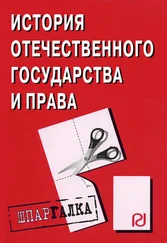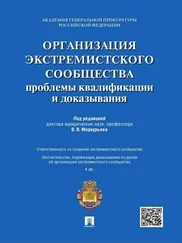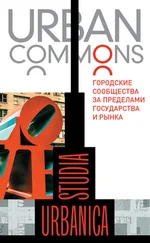Uwe Rada, «Die Mauer im Park», taz, die tageszeitung, January 21, 2009, http://www.taz.de/!29034/ (accessed November 18, 2014).
См. анонс выборов: «Wahlen zum Nutzer_innenbeirat für Gleisdreieck- und Flaschen- halspark», gleisdreieck-blog.de, October 19, 2014, http://gleisdreieck-blog.de/2014/10/19/wahlen-zum-nutzerbeirat-fuer-gleisdreieck-und-flaschenhalspark/ (accessed December 19, 2014).
До 2005 г. доступ на территорию был официально запрещен.
Felix Schwarz, «So einen Park bauen zu dürfen ist Wahnsinn», interviewed by Plutonia Plarre, taz, die tageszeitung, Oktober 28, 2014, https://taz.de/!275584/ (accessed December 13, 2019).
Martin Düspohl and Bezirksmuseum, Kleine Kreuzberg-Geschichte (Berlin: Berlin-Story-Verl., 2009).
Christiane Howe, «Nachbarschaften und Straßenprostitution. Konfliktlinien und Lösungsansätze im Raum rund um die Kurfürstenstraße in Berlin», November, 2011, https://www.tu-berlin.de/fileadmin/f27/PDFs/Forschung/Nachbarschaften_und_Strassen-Prostitution_Bericht.pdf (accessed January 26, 2015).
См.: Senatsverwaltung für Stadtentwicklung und Umwelt, «Auslobung», http://www.stadtentwicklung.berlin.de/aktuell/wettbewerbe/ergebnisse/2006/gleisdreieck/auslobung.shtml (accessed January 22, 2015).
Schwarz, «So einen Park bauen zu dürfen ist Wahnsinn»; cf. planning meeting reports http://www.berlin-gleisdreieck.de/Seiten/aktuelles/Park_Planung.htm (accessed January 20, 2015).
Проект получил несколько дизайнерских премий, например «Sonderpreis/Auszeichnung Deutscher Städtebaupreis 2014».
Kalle Harberg, «Park am Gleisdreieck. Alles im grünen Bereich», Der Tagesspiegel, June 22, 2013, http://www.tagesspiegel.de/berlin/park-am-gleisdreieck-alles-im-gruenen-bereich/8390510.html (accessed November 18, 2014).
Группа студентов Технического университета Берлина проанализировала первые шаги соучаствующего проектирования в парке Гляйсдрайек; об этом см.: Sebastian Holtkamp, Projekt Gleisdreieck zwischen Nutzen und Planen (Berlin: Univ.-Verl. der TU, Univ.-Bibliothek, 2007), http://d-nb.info/987851098/34.
См. эссе Бриджит Кратцвальд в этом сборнике.
International Association for Public Participation, IAP2 spectrum, 2007.
Neil Brenner, «Theses on Urbanization», Public Culture 25, № 1 (2013): 89.
Erik Swyngedouw, «‘Every Revolution has its Square’: Politicizing the Post-Political City», in Urban Constellations, Matthew Gandy, ed. (Berlin: Jovis, 2011), 22–25.
Jeff Shantz, Commonist Tendencies: Mutual Aid Beyond Communism (Brooklyn, NY: Punctum Books, 2013), 1.
David Harvey, The Urbanization of Capital (Oxford: Basil Blackwell, 1985).
Michael Hardt and Antonio Negri, Commonwealth (Cambridge, MA: Harvard University Press, 2009), 154.
Мятежность здесь понимается как «провокация, насильственная интервенция, которая не столько нацелена на создание единого нового порядка, сколько старается радикально дестабилизировать уполномоченные формы власти, знания и организации, таким образом создавая пространство, необходимое для новых актов учреждения (constitution)» (Insurgent Encounters: Transnational Activism, Ethnography, and the Political, Jeffrey Juris and Alexander Khasnabish (London; Durham: Duke University Press, 2013), 7).
Ibid., viii.
К примеру, см.: Elinor Ostrom, Governing the Commons: The Evolution of Institutions for Collective Action (Cambridge, UK: University of Cambridge, 1990); Остром Э . Управляя общим: эволюция институтов коллективной деятельности. М.: ИРИСЭН; Мысль, 2010; Elinor Ostrom, «Coping with Tragedies of the Commons», Annual Review of Political Science 2 (1999): 493–535; Thomas Dietz, Elinor Ostrom and Paul C. Stern, «The Struggle to Govern the Commons», Science 302 (2003): 1907–1912.
George Caffentzis, «A Tale of Two Conferences: Globalization, the Crisis of Neoliberalism and the Question of the Commons», the Commoner, December, 2010, http://www.commoner.org.uk/wp-content/uploads/2010/12/caffentzis_a-tale-of-two-conferences.pdf (accessed August 20, 2013).
Важно учитывать, что «ресурсы можно определять лишь в соотнесении со способом производства (mode of production), который стремится использовать ресурсы и в то же время „производит“ их за счет физической и мыслительной деятельности пользователей» (David Harvey as cited in Erik Swyngedouw, «The City as a Hybrid: On Nature, Society and Cyborg Urbanization», Capitalism, Nature, Socialism 7, № 2 (1996): 65).
К примеру см.: Frank van Laerhoven and Elinor Ostrom, «Traditions and Trends in the Study of the Commons», International Journal of the Commons 1, № 1 (2007): 3–28.
Например, см.: Shin Lee and Chris Webster, «Enclosure of the Urban Commons», Geojournal 66, № 1/2 (2006): 27–42; Ian McShane, «Trojan Horse or Adaptive Institutions? Some Reflections on Urban Commons in Australia», Urban Policy and Research 28, № 1 (2010): 101–116; Jeremy Németh, «Controlling the Commons: How Public Is Public Space?» Urban Affairs Review 48, № 6 (2012): 811–835.
For example: Sheila R. Foster, «Collective Action and the Urban Commons», Notre Dame Law Review 87, № 1 (2011): 57–134; Nicole Stelle Garnett, «Managing the Urban Commons», University of Pennsylvania Law Review 160 (2012): 1995–2027.
Здесь и далее «совместности» понимаются как динамическое социальное отношение, которое настраивают и перенастраивают социоисторические отношения и социопространственные практики; совместности суть оспариваемое, коллективное пространство, единовременно удерживающее и репрессивный, и эмансипаторный потенциалы. Больше см.: Peter Linebaugh, The Magna Carta Manifesto: Liberties and Commons for All (Berkeley: University of California Press, 2008), 279.
Giorgio Agamben, The Coming Community (Minneapolis: University of Minnesota Press, 1993), 79.
Читать дальше
![Коллектив авторов Urban commons. Городские сообщества за пределами государства и рынка [litres] обложка книги](/books/387248/kollektiv-avtorov-urban-commons-gorodskie-soobches-cover.webp)







![Коллектив авторов - Гражданское право. Части вторая и третья. Краткий курс [litres]](/books/404815/kollektiv-avtorov-grazhdanskoe-pravo-chasti-vtoraya-thumb.webp)
![Коллектив авторов - Мозг и сознание [Разгадка величайшей тайны человеческого мозга] [litres]](/books/406124/kollektiv-avtorov-mozg-i-soznanie-razgadka-velicha-thumb.webp)
![Коллектив авторов - Рыба и морепродукты. Закуски, супы, основные блюда и соусы [litres с оптимизированными иллюстрациями]](/books/409945/kollektiv-avtorov-ryba-i-moreprodukty-zakuski-su-thumb.webp)

